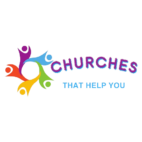Car insurance is necessary for people who have a private car and drive a car. Car insurance provides financial protection to people from an accident, theft, or damage. But for many people, the cost of car insurance can be a burden. Don’t worry! Here are some government assistance programs that may help you to pay your car insurance rate that will protect your car.
The car insurance cost can be prohibitive for low-income families, the elderly, and low-income people Without proper insurance, drivers can face legal penalties and in the event of an accident, they have no coverage, creating a cycle of hardship. That is why the government assistance program is here to help you the most.
Types of Government Assistance for Car Insurance
There are various types of government assistance programs for car insurance that help people to pay their car insurance costs.
Low-Cost Insurance Programs
Some states and regions offer affordable car insurance policies designed specifically for low-income drivers. These policies offer special liability coverage at a discounted rate, ensuring compliance with legal requirements and affordability.
For example:
- California’s Low Cost Automobile Insurance Program (CLCA): This program is available to income-qualified families, providing affordable liability coverage to ensure state requirements are met.
- New Jersey’s Special Automobile Insurance Policy (SAIP): Known as “dollar-a-day” insurance, this policy provides limited coverage for medical emergencies at very low cost.
Subsidies and Vouchers
In some areas, governments provide subsidies or vouchers to ease the burden on low-income families. These financial assistance are often targeted at specific groups, such as single parents, and veterans receiving other public assistance.
Incentives for Safe Driving
Some government programs reward safe driving behavior with discounts or rebates on insurance premiums. These programs encourage responsible driving while making insurance more affordable.
- Also read: Government Car Down Payment Assistance
How Do You Get Emergency Help Paying Car Insurance?
Do you need car insurance help? Here is the solution for you. Here I have listed the details that will help you to get emergency help paying car insurance:
Contact Your Insurance Provider
- Ask for a coverage plan: Some insurance companies offer flexible or short-term coverage options.
- Ask about discounts: You may qualify for discounts, such as a better driving record, bundled programs, or reduced mileage.
- Review your plan: Consider temporarily reducing options to lower your premiums.
Ask for Local Assistance Programs
- Nonprofits and charities: Nonprofits like the Salvation Army or United Way can provide emergency financial assistance, including car insurance.
- State or local government programs: California’s Low-Cost Automobile Insurance Programs (CLCA) have assistance programs for low-income drivers.
Explore Financial Assistance Options
- Community Action Agencies: These agencies often help with essential expenses for individuals in crisis.
- Organizations: Many churches or community groups provide short-term financial help.
Apply for Financial Aid
- Emergency Loans: You may take small personal loans from credit unions or online lenders. It’s important to compare the interest rate.
- Crowdfunding: It’s a great way. GoFundMe can be used to get help from friends and the community.
Look for Alternative Insurance Options
- Shop Around: Compare quotes from other insurance providers to find a more affordable policy.
- Usage-Based Insurance: Pay-as-you-go insurance may save money if you’re driving less.
Additional Resources
- Visit Benefits.gov to check for federal or state-level assistance programs.
- Contact United Way (dial 211) for referrals to local programs offering help with car insurance costs.
Car Insurance for Low-income Individuals – Eligibility Requirements
Car insurance assistance programs are mainly for low-income families in need. Here are the eligibility requirements:
✅ State-Sponsored Low-Income Insurance Programs
General Requirements:
- Income: Your household income must fall below a certain threshold, usually tied to the federal poverty guideline or a percentage of income in your area.
For example, in California’s CLCA program, income must be at or below 250% of the state poverty level.
- Cost of the car: Your car may be worth less than a certain amount, usually $25,000 or less.
- Driving record: Check for a clean or relatively clean driving record.
- Valid Driver’s License: Must have a current driver’s license.
✅Minimum Coverage Insurance
For low-income families here are some affordable options:
Minimum Legal Requirements: You must meet your state’s minimum auto insurance requirements.
Payment terms: Some insurance companies may require proof of steady income to qualify for payment terms.
✅Usage-Based or Pay-As-You-Go Insurance
Eligibility for car insurance assistance is often broader, but they are best suited for:
Drivers with low annual mileage.
People were willing to have their driving habits monitored through a mobile app or a telematics device.
✅Non-Owner Car Insurance
This is a good option for low-income people who don’t own a car but occasionally drive:
- You must not own a vehicle.
- You must have a valid driver’s license.
How to Apply for Free Government Assistance for Car Insurance?
The application process for free government assistance for car insurance is listed below:
- Look for state programs: Look for a state that offers programs like California’s Low Cost Auto Insurance Program (CLCA).
- To Verify Eligibility: Meet income limits, residence, vehicle price, and driving record requirements.
- Collect documents: Prepare proof of income, residence, identity, vehicle registration, and driving record.
- Apply: Submit applications online, by mail, or in person through the program’s website or office.
- Follow Up: Confirm receipt and provide any additional documents if requested.
- Explore Alternatives: Contact nonprofits, community action agencies, or insurers for discounts and payment plans.
Conclusion
In conclusion, applying for free or subsidized car insurance assistance requires researching available programs, meeting eligibility criteria, and submitting the necessary documentation. Whether through state-sponsored initiatives, nonprofit organizations, or alternative discount options, there are resources to help low-income people manage car insurance costs. Stay proactive, follow up on applications, and explore all available options to secure the assistance you need.
- Financial Help for Homeschooling – How to Get Help? - April 1, 2025
- Help with Emergency Vet Bills – Exclusive Tips to Get - March 28, 2025
- Charities That Offer Emergency Help Paying Car Insurance - March 25, 2025



